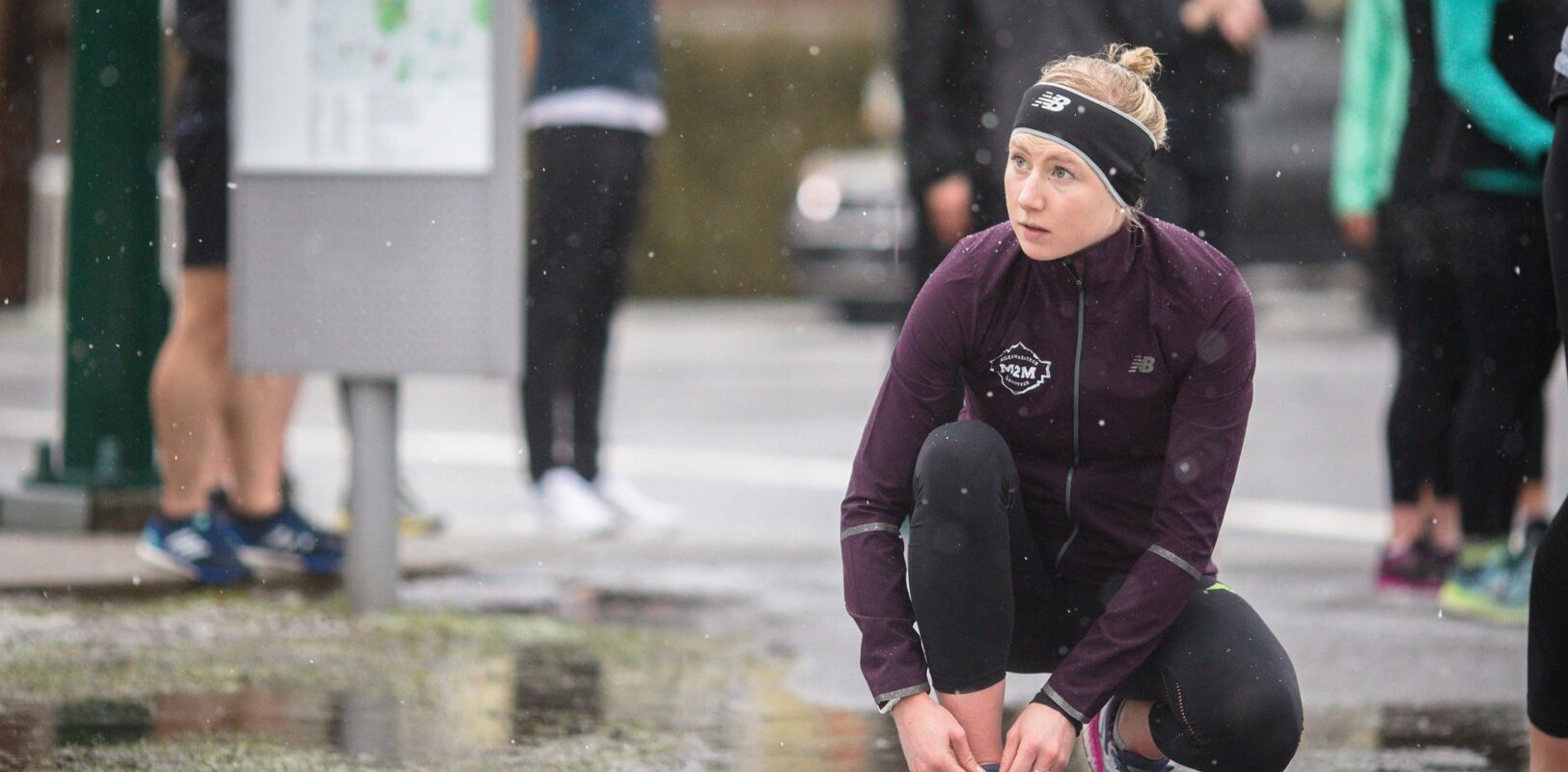
Mile2Marathon’s Guide to Winter Running
While winters are mild in Vancouver, where Mile2Marathon first started, that’s not the case for the rest of Canada. With the eastern provinces getting hit with colder temperatures and ample snowfall, winter running can be a challenge. You may already be looking out your window at a winter wonderland.
If that’s the case don’t be discouraged, many great long distances runners have trained through a great Canadian winter. How does the saying go…. “what doesn’t break you, will make you stronger.” While that’s true and good motivation to get you through the winter, there are some things to keep in mind to make sure you bound through the snow without setback.
Be safe
Injuring yourself by slipping and falling is a concern with winter running conditions. Sometimes the road is cleared better than sidewalks, and you’ll be relegated to running on the roads. Try to find quiet roads to run on. Be sure to run against traffic so you can see what’s coming at you. Snowbanks can get very high after a few snowstorms and drivers may not be able to see you crossing the road. Pay extra attention at intersections and when drivers are turning right. Wear a headlamp and reflective gear when running at night. It’s as important to both be seen and be able to see.
Modify your footwear
For running in the winter, you’ll want to swap your footwear for an option that provides a better grip while running on snow. There is a wide range of winter running shoes available, most with a Goretex or similar weatherproof upper and a grippy outsole to give you better traction on snow and ice. If you want to use your regular shoes, there are some traction devices that can allow you to do that. Yaktrax is a popular choice, however, these can cause some modifications to your gait that may cause new overuse issues. Another option is to put good old fashion 3/8″ sheet metal screws in the bottom of an older pair of runners or in shoes specifically designed for this, like the Saucony Mad River TR. This option is only recommended if your entire running route is going to be on packed snow or ice, like the Rideau Canal in Ottawa. Nearly 8km in one direction, you should all come to check it out this winter!
Plan your route
here are several things to consider when planning your run that you don’t really have to think much about during other times of the year. Since you may be relegated to running on the roads, try to plan a route that is in a low traffic area, this is one instance in which living in the ‘burbs may be an advantage. You should also plan out an approximate time or distance for your route, nothing worse than running too long or far in the snow. You should also be conscious of the wind direction. Start your run into the wind and try to finish with it at your back. If you run with the wind at your back during the first part of your run you’ll get hot and sweaty and then when you run into the wind during the second part of your run you’ll get cold very quickly.
Dress appropriately
Layering is very important in winter. We recommend a windproof outer layer, and insulated and wicking mid-layer that moves sweat away from the skin. Your body temperature increases with running so dress for conditions that are warmer than it is. You should feel chilled when you go out, but your body temperature will increase and you’ll warm up quickly. If you’re heading out during the early mornings or into the evening, add a reflective outer layer and a headlamp to ensure you’re seen.
Don’t be afraid to adjust
When the snow is too deep or the weather is simply too horrendous to do any safe, quality running it’s better to adjust your scheduled training for the day, by either cutting your run short, finding an alternative, or pushing your workout off til a better day. It’s better to alter the schedule a little bit in this way than try to push through and potentially end up slipping and falling and tweaking a muscle that then hampers you for weeks or months afterward.
Pay close attention to any aches & pains
Speaking of tweaking a muscle, you have to read your body really well when running on snow and ice. There’s a good chance that you’ll be a bit sore the day after running on snow, especially loose snow. Running on loose snow is similar to running on sand, it requires the use of many more stabilizing muscles than running on solid surfaces. So, if you’re sore the day after running on loose snow, it may not be reason for huge concern, as you’re waking up some stabilizers that have been dormant for a while. But, if you feel a particular muscle getting tighter and tighter during exercise, this may be more serious and cause for concern. So, tread carefully…
When in doubt, hit the treadmill
This is always an option that we don’t want to deter you from. Sometimes the elements just aren’t worth braving, and a run on the treadmill is a better option. If you find your mind starts to wander or you bore easily on the treadmill, throw on some tunes or your favourite podcast to help pass the time. We promise the treadmill isn’t all bad.
 Dylan Wykes
Dylan Wykes